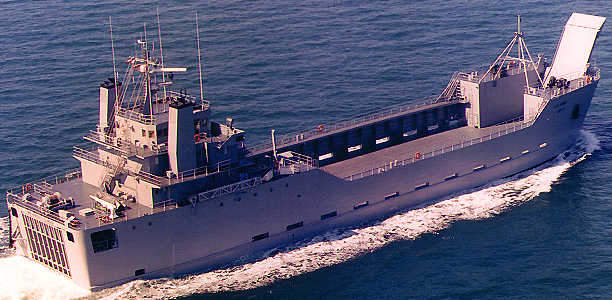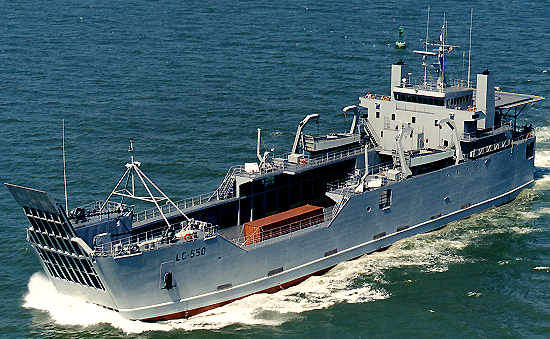The Frank S Besson Class is a class of logistic support vessels in service with the United States Army. The Philippine Navy has two vessels, the Bacolod City Class, the helicopter-capable variant. The ships were built by VT Halter Marine (formerly Moss Point Marine) of Gulfport, Mississippi.
Six ships were completed for the US Army between 1987 and 1994. These are the General Frank S Besson (LSV 1), CW 3 Harold C Clinger (LSV 2), General Brehon B Somervell (LSV 3), Lt General William Bunker (LSV 4), Major General Charles P Gross (LSV 5) and Specialist 4 James A Loux (LSV 6).
Three ships are based at Fort Eustis in Virginia and two are in Hawaii. The ship General Brehon B Somervell is based at Tacoma, Washington with the US National Guard.
Two further vessels have been built: the SSGT Robert T Kuroda (LSV 7), launched in 2003 and delivered in July 2005 and the MGEN Robert Smalls (LSV 8), launched in 2004 and delivered in June 2006.
VT Marine have the capability to also produce the LSV in optional configurations to: house, feed, transport and deploy troops; deploy and retrieve helicopters and patrol boats concealed below the flight deck; train military personnel in seamanship; partially submerge allowing at-sea loading and unloading of smaller vessels; and civil / military inter-island transportation.
CARGO SYSTEMS
The prime mission of the ship is the direct transport and discharge of liquid and dry cargo to shallow terminal areas, to remote under-developed coastlines and on inland waterways. The ships also provide a drive-through capability by mating the bow ramp to the neighbouring stern ramp in order to form a floating bridge.
The ships can be computer linked to logistics files at military stock points, and can transport roll-on / roll-off and containerised cargo for unit deployment and relocation, tactical resupply and sustained resupply.
The ship does not require external cranes or port facilities and four feet of water allows the ship to land under full load. This capability expands the choice of landing locations and reduces the potential enemy impact on the logistics support operations.
The ship also provides self-delivery to overseas locations. The ramps and the main deck are able to withstand roll-on / roll-off operations of the Abrams M-1 tank, the P&H 6250 crane complete with counterweight and boom, and rough terrain handlers.
The ship can carry up to 900 short tonnes during Logistics Over The Shore Operations (LOTS) and up to 2,000 short tonnes during Intra-Theatre Line-Haul (ITLH).
LSV – HELICOPTER CAPABLE
The LSV-helicopter capable variant in service with the Philippine Navy provides concealed transport, deployment and retrieval of both helicopters and patrol boats.
Attack helicopters are concealed below a modular flight deck while patrol boats and intercept craft are behind the stern ramp. The configuration presents the appearance of a logistic supply ship without the obvious display of force.
LSV – SEMI-SUBMERSIBLE VARIANT
The LSV semi-submersible variant provides strategic transport and launch as well as mobile repair and maintenance capabilities to minimise the down-time for smaller craft. The hull semi-submerges, the bow ramp lowers and the LSV takes on large floating cargo, patrol boats, etc. for transport and launch, or at-sea dry-dock and repair. When not carrying out the semi-submersible activities, the LSV-SSV maintains many of the mission capabilities of the standard LSV.
LSV – TROOP CARRIER
The troop carrier provides effective and efficient unit deployment and relocation. The ship has capacity for 144 troops and six officers plus supplies and equipment. The tunnel area below the superstructure is outfitted with three-storey canvas bunks and the officers’ accommodation is in separate berthing areas. Forced air ventilation is provided in the accommodation areas.












